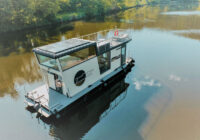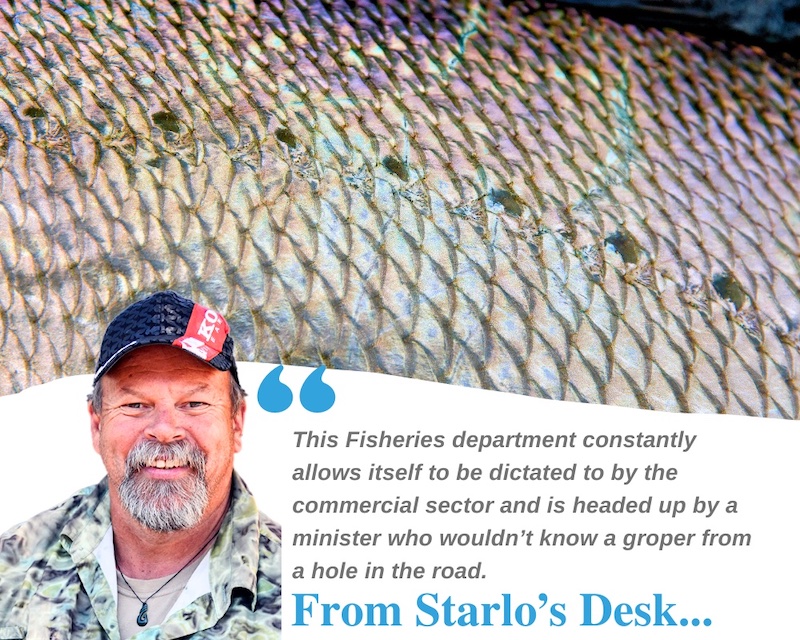
On 31 July this year the public consultation period for the draft NSW Mulloway Harvest Strategy closed, with no submissions being accepted after that date. That deadline had already been extended once due to public demand, but as far as I can see, it hasn’t been extended again.
I have a rather sad admission to make, and it’s not one I’m proud of: I didn’t put in a submission. I had all the best intentions of doing so, but every time I visited the links provided to read up on the draft harvest strategy, I ended up confused and befuddled. The level of technical jargon, gobbledegook and bureaucratic doublespeak simply did my head in, and made my mind glaze over within minutes. Call me a cynic, but I can’t help wondering if this might not have been exactly the intention of those turgid documents: to dissuade and discourage genuine public input.
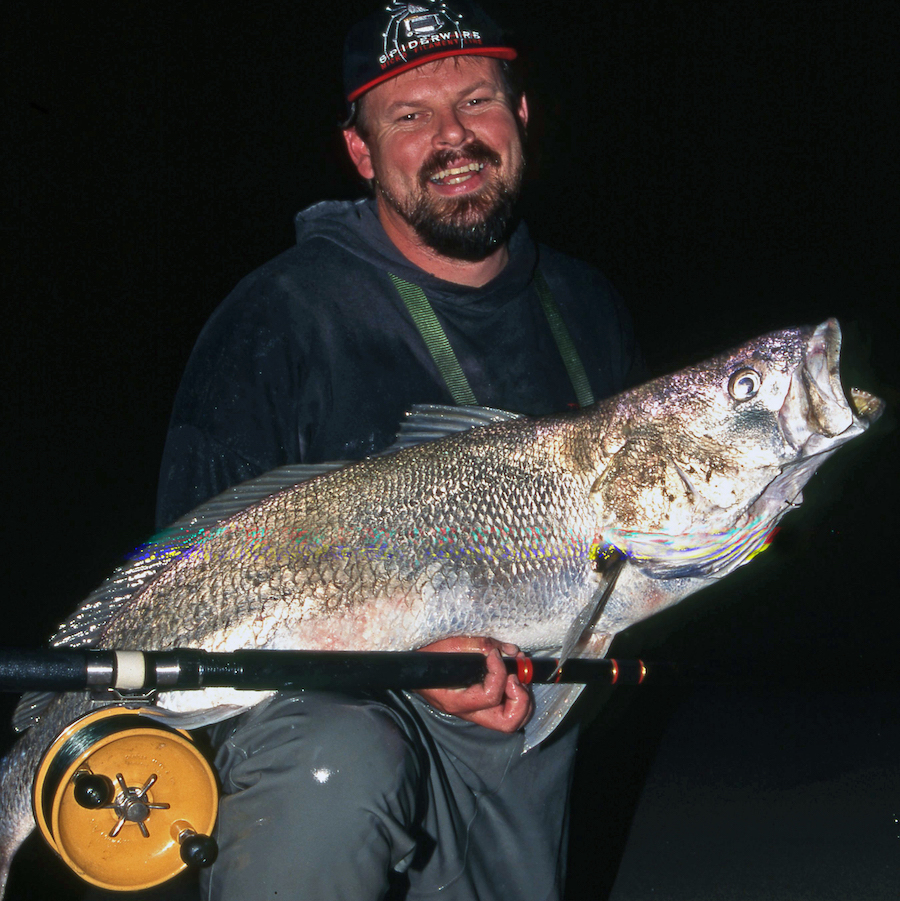
Starlo can count the jewies he’s caught off the beach without having to remove his shoes. They shouldn’t be as rare as they are.
It would be fair to say that my overall impression of the NSW Department of Primary Industries (Fisheries) has reached absolute rock bottom of late. The ridiculous blue groper ban was clearly a low point, but it’s only one of a string of poor decisions this department has made across the past few years. The fact that their current Minister is, in my opinion, the least qualified person to hold that portfolio since convicted criminal Eddie “The Eel” Obeid warmed the same seat doesn’t help. Nor does the fact that several good people I know who work within the department have all-but given up on changing things and are basically biding their time until they can move on or retire. It’d be a gross understatement to say that workplace morale is low.
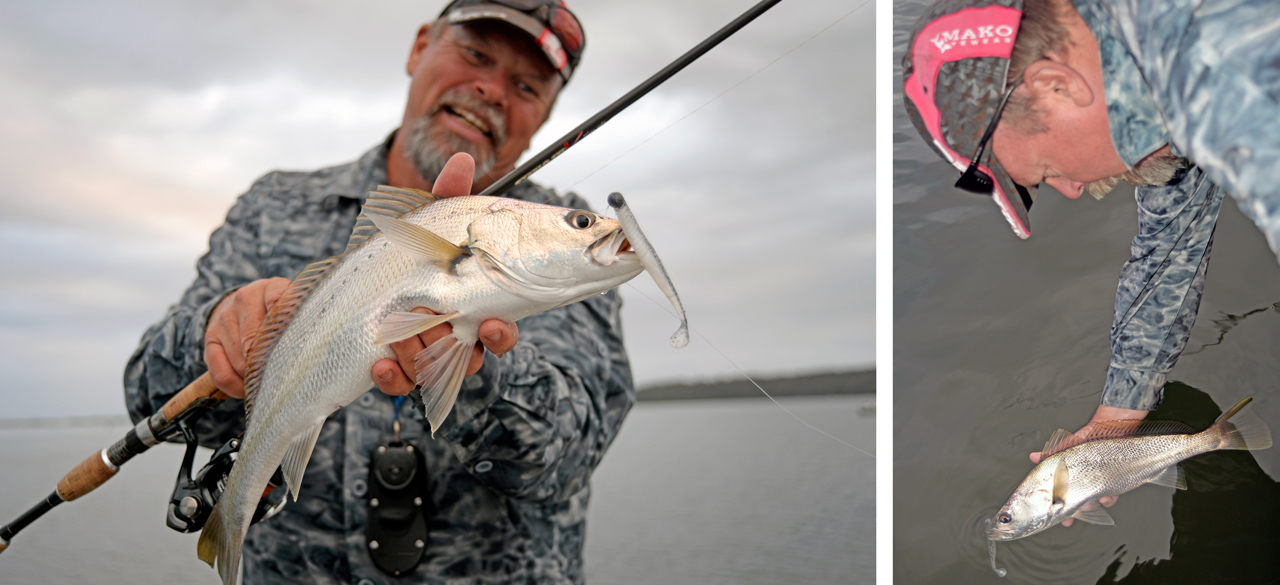
The presence of strong numbers of juvenile mulloway in east coast estuaries right now seems like good news, but if few of them ever reach maturity and spawn, this mini “boom” will be short-lived.
I’ll admit that when I first heard and read about the concept of “harvest strategies” as a fisheries management tool, I was quietly excited. The model sounded promising. As I understood it, harvest strategies established “trigger points” within fish stocks that would automatically implement controls on both the commercial and recreational take of a species — by tweaking bag, size, seasonal and gear limits to adjust the total harvest. What I especially liked was the inference that these triggers and controls would work in both directions: restricting catches as stock numbers fell, but also relaxing controls and allowing an increased take as those same stocks rebounded. That was music to my ears!
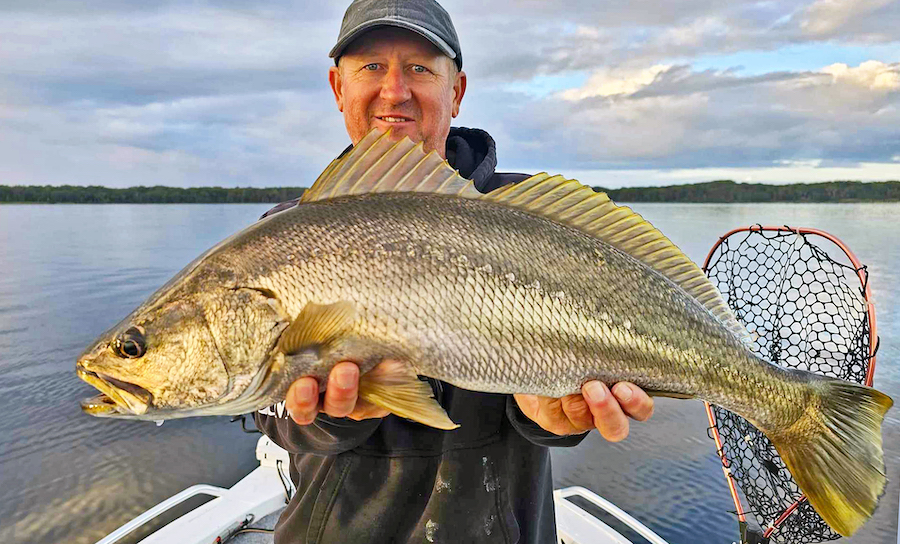
Soapies and schoolies are the new norm and mulloway over a metre in length are becoming harder and harder to find.
Of course, I should have known better. As always, the devil was in the detail. For starters, there’s the whole messy quagmire of establishing baselines and accurately assessing existing stocks at any point in time. That’s a bit of a “how long is a piece of string” process, and even the boffins seem to disagree on the best ways to do it, while the on-water observations of fishers like you and me are generally dismissed as being “anecdotal” and therefore largely worthless.
Then there’s the matter of how long it all takes to happen. Mulloway stock evaluation in NSW has been going on for years and the supposed management strategy is still only a “draft”. It’s akin to assessing the size of a block of ice as it melts in the sun: every time you measure it, the readings are smaller. Talk about Nero fiddling as Rome burns…

Even absolute guns like Chris Cleaver are having to put in more hours and effort to find larger jewies today.
So, where are east coast mulloway stocks at right now, and how does their future look? I wish I could answer those questions definitively, but I can’t. Certainly, there have been some better-than-average spawning conditions across recent years, and juvenile jewfish are far more abundant in many of our waterways today than they have been in a long time. But a load of baby mulloway that have never spawned and may well be harvested before they ever have a chance to do so doesn’t equate to a healthy population. High recapture rates of tagged fish and the regular targeting of pre-spawn aggregations of adult jewfish by netters are ominous signs. So is the fact that — historically — larger, mature mulloway appear to have been much more abundant than they are today.
At the very least, east coast mulloway stocks are badly size-overfished, with mature adults being far less common than they should be, despite the current high numbers of “soapies” and “schoolies” present in many systems. Worst case scenario is that our mulloway stocks are actually teetering on the brink of a catastrophic collapse similar to the one experienced by the same species in South African waters, where they’re known as dusky kob.
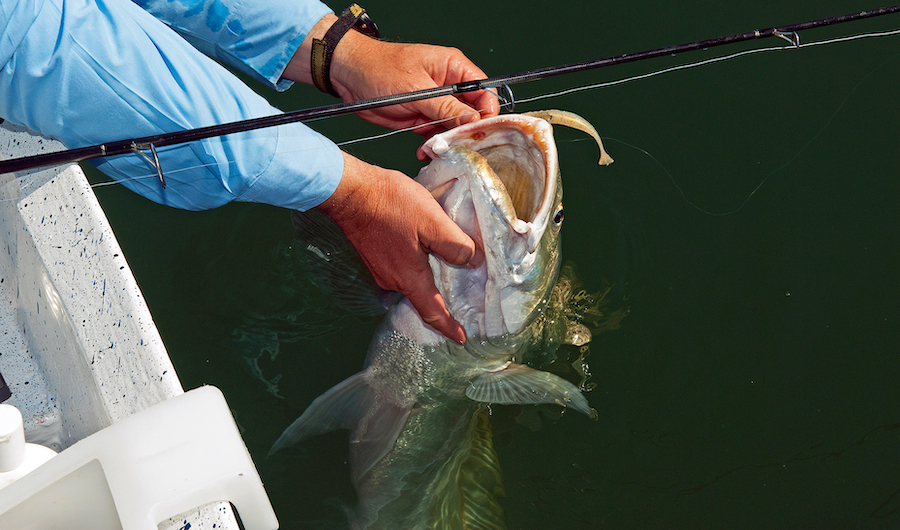
Letting a decent one go is a special thrill, but one that’s becoming rarer by the year.
What will NSW DPI do about this situation? It’s hard to tell from my perusal of their opaque “draft” management documents. But based on their recent track record, my guess is they’ll probably do nothing but talk until it’s almost too late, then over-react by banning everything. What should they do? That’s a bit of no-brainer, in my opinion: declare mulloway a recreational-only species, ban all commercial harvest of jewfish for a minimum of five years, lift the recreational legal length to at least 75cm, and retain the current one fish-per-day bag limit. I reckon stocks would bounce back quickly and dramatically, driving an economic boom in the state’s rec’ fishing and tourism industries. But that’s way too smart for a department that constantly allows itself to be dictated to by the small but powerful commercial sector and is headed up by a minister who wouldn’t know a groper from a hole in the road. Sad times indeed…
Until next time, Tight Lines.
![]()
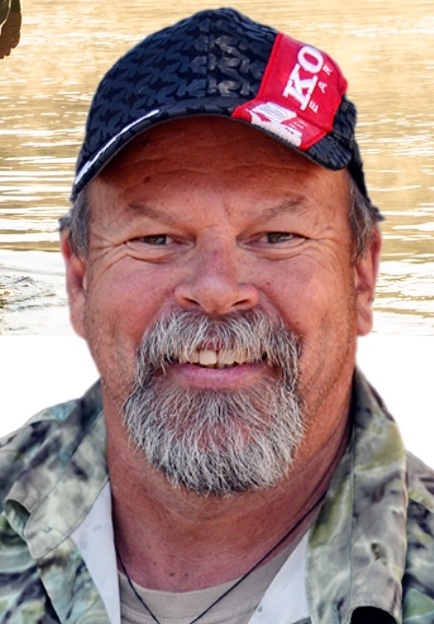
Steve (Starlo) Starling is an Australian sports fishing writer and television personality who has appeared in many of Rex Hunt’s Fishing Adventure programs on the Seven Network.
He has published twenty books on the subject of angling, as well as thousands of magazine articles.
Starlo has scripted and presented many instructional videos and DVDs, and been a Researcher and on-screen presenter for a number of Australian angling and outdoor television programs.
Follow Starlo Gets Reel on Youtube for some of the best, educational and most entertaining fishing viewing on-line.
Click on the banner below for a direct link to the Channel.








